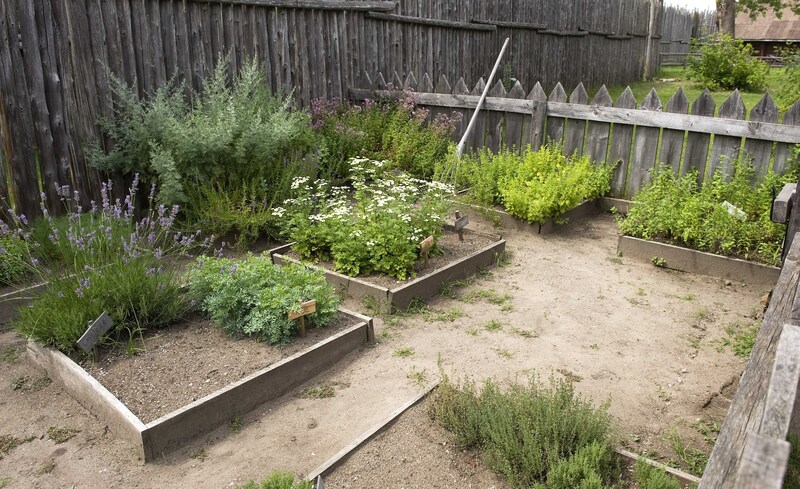Discover the Most Practical Ways to Eradicate a Tree Stump
Tree stumps can be a stubborn reminder of a removed tree, often turning a vibrant landscape into an unsightly patch. Whether you want to reclaim your lawn's beauty or prepare the ground for new plantings, learning how to get rid of a tree stump is a vital skill for any property owner. In this guide, we'll explore the most practical ways to eradicate a tree stump, from manual labor to eco-friendly methods and advanced machinery. Read on to discover comprehensive step-by-step advice, insightful tips, and answers to common questions, all crafted to help you choose the best stump removal technique for your unique situation.
Why Should You Remove a Tree Stump?
- Safety Hazard: Tree stumps can cause trips and falls, especially in high-traffic areas of your yard.
- Pest Attraction: Decaying stumps are prime real estate for termites, ants, fungi, and other pests.
- Aesthetic Issue: A lonely stump can spoil the visual appeal of your garden or landscape.
- Obstructs Landscaping: Stumps can get in the way of new projects, mowing, or replanting.
- Potential Regrowth: Some stumps may sprout new shoots, leading to unwanted regrowth of the tree.

Popular Methods to Remove a Tree Stump - Which is Right for You?
There are several practical and effective approaches for tree stump eradication. The optimal solution depends on factors like stump size, location, budget, available tools, and how quickly you want the job done. Let's explore the top methods in stump removal:
1. Manual Tree Stump Removal
- Best for: Small to medium-sized stumps; those with shallow roots.
- Pros: Eco-friendly, minimal cost, gives a sense of achievement.
- Cons: Labor-intensive, time-consuming, not suitable for large stumps.
How to manually remove a tree stump:
- Gather Your Tools: You'll need a digging shovel, mattock, axe or hand saw, loppers, and possibly a root saw.
- Clear the Area: Remove rocks, debris, and any plants that surround the stump. This opens up access and prevents tool damage.
- Dig and Loosen: Use the shovel and mattock to dig around the base of the stump, exposing the main roots (also called the root ball). Try to go as deep and wide as possible.
- Cut the Roots: With an axe, loppers, or root saw, cut through the thick roots. For stubborn roots, alternate between cutting and prying with your tools until they come free.
- Remove the Stump: Once the roots are severed, pry or wiggle the stump out of the ground. This may require some leverage and patience.
- Fill the Hole: Fill the cavity with soil and top with grass seed or sod to blend in with your landscape.
Pro Tip: If the stump is especially large or stubborn, consider renting a manual winch or using a heavy-duty lever to gain extra force during the removal.
2. Stump Grinding - The Fastest Professional Method
- Best for: Large or multiple stumps; when speed matters.
- Pros: Quick, efficient, removes stump below ground level.
- Cons: Can be costly if hiring professionals; rental costs for grinders if DIY.
Stump grinding involves using a powerful machine with a rotating blade to chip away the wood and roots until the stump is well below the soil surface. Here's how the process works:
- Hire a Pro or Rent Equipment: If you choose to do it yourself, rent a stump grinder from a local hardware store. For tougher projects or if you're not comfortable with machinery, hire a professional stump removal service.
- Prepare the Area: Remove rocks, and clear any obstructions around the stump. Trim the stump as close to ground level as possible using a chainsaw (if safe to do so).
- Grind the Stump: Position the stump grinder over the stump, start the machine, and slowly move the blade from side to side, grinding down the wood in layers. Continue until the stump is 6-12 inches below the surface.
- Clean Up: Collect the wood chips, which make great mulch for landscaping, and fill the hole with soil. Seed the area if desired.
Note: Stump grinders can be dangerous. Always wear proper safety gear, including goggles, gloves, ear protection, and sturdy boots.
3. Chemical Stump Removal (Accelerated Decomposition)
- Best for: Stumps with time to decompose; minimal effort preferred.
- Pros: Little manual labor, cost-effective for multiple stumps.
- Cons: Takes weeks to months; chemicals may impact soil health if misused.
This method uses commercial stump removal chemicals high in potassium nitrate to speed up the natural rotting process of the stump.
- Drill Large Holes in the Stump: Use a drill with a 1-inch (or larger) bit to create deep holes into the top and sides of the stump. The more, the better.
- Pour in Chemical: Fill each hole with stump remover granules or powder, following the manufacturer's instructions.
- Add Water: Pour water into the holes to help soak the chemicals deep into the wood.
- Wait: Over the next 4-6 weeks, the stump will begin to soften and rot. Check progress occasionally; reapply chemicals if necessary.
- Remove the Remains: Once the wood is very soft, break up the stump with an axe, shovel, or pick and remove the remains.
Environmental Caution: Only use stump removal chemicals as directed, and never near edible plants, water sources, or if pets and wildlife are present.
4. Burning a Tree Stump
- Best for: Rural areas or large properties with necessary permits.
- Pros: Inexpensive, effective for certain wood types.
- Cons: May require permits; risk of fire hazards; not allowed everywhere.
Burning is another way to get rid of a stubborn stump, but it requires planning, safety, and local legal compliance. Here's the process:
- Check Local Laws: Obtain any required permits and confirm that burning is allowed in your location.
- Create a Safe Zone: Clear flammable material within a 10-foot radius. Surround the area with stones or bricks to contain the fire.
- Drill Holes: As with the chemical method, drill deep, wide holes in the top of the stump to allow airflow and accelerant penetration.
- Add Fuel: Fill the holes with kerosene or fuel oil (never use gasoline) and let it soak for 24 hours.
- Ignite Carefully: Light the stump and allow it to smolder. Monitor continuously, keeping water and fire-extinguishing tools on hand.
- Extinguish and Remove Ash: After burning is complete, ensure the fire is fully out. Shovel out any ash and fill the hole.
Warning: Burning a stump is dangerous and environmentally impactful. Use only as a last resort and never during drought or windy conditions.
5. Natural Stump Decay (Patience Required)
- Best for: Those who don't mind waiting a few years; non-invasive species.
- Pros: Zero cost, environmentally friendly.
- Cons: Very slow; stump remains until fully decayed.
Allowing nature to break down a tree stump is the easiest way to handle removal--simply let time and the elements do the work.
- Speed Up the Process: You can accelerate decay by keeping the stump moist, covering it with garden soil or mulch, and drilling holes for better airflow and fungal activity.
- Introduce Fungi: Some people inoculate stumps with edible mushrooms, which feed on the wood and break it down.
- Wait: Depending on stump size and species, it may take several years for complete decomposition.
- Remove Remains: Eventually, you'll be left with soft, crumbly wood that can be shoveled away.
Choosing the Right Stump Removal Method: Factors to Consider
- Stump Size: Large stumps are best handled with grinders or professional help.
- Tree Species: Hardwoods rot more slowly; thick roots are harder to cut manually.
- Budget: Manual and natural methods are cheapest; grinding and professional removal cost more.
- Timeframe: If you need fast results, mechanical grinding is best. For long-term, hands-off decomposing, use chemical or natural methods.
- Environmental Impact: Minimize chemicals and consider burning only as a last resort.
Frequently Asked Questions - Tree Stump Eradication Insights
How long does it take to remove a tree stump?
- Grinding: 1-2 hours for average stumps.
- Manual Removal: A few hours to a full day, depending on size.
- Chemical Methods: 4-8 weeks for visible results.
- Natural Decay: 1-5 years based on stump size and climate.
Can I plant a new tree in the same spot?
Yes, but you'll need to remove the old stump and as much root material as possible, then amend the soil with fresh compost or topsoil to aid new root growth.
Are homemade chemical stump removers effective?
Some DIY methods using substances like Epsom salts and vinegar might encourage decomposition, but commercial stump removal chemicals are much more effective and reliable for accelerating decay.
How much does professional stump removal cost?
Average Costs:
- Stump Grinding: $75-$250 per stump, depending on size and access.
- Full Removal by Excavator: $200-$500+ per stump.
Essential Safety Tips When Removing Tree Stumps
- Wear Protection: Always use gloves, eye protection, and sturdy footwear.
- Check for Utilities: Locate underground cables and pipes before digging or grinding.
- Follow Instructions: Use all chemicals and power tools as directed.
- Dispose Responsibly: Compost wood chips or contact your waste provider for disposal options.
- Never Rush: Stump removal can be unpredictable--work steadily and carefully.

Conclusion: The Best Methods to Eradicate a Tree Stump
To discover the most practical ways to eradicate a tree stump, focus on your needs, resources, and long-term landscape plans. Manual stump extraction is cost-effective for small stumps. Stump grinding is the fastest, most professional method, while chemicals and natural decay offer slower, less labor-intensive solutions. Burning is effective but risky and restricted in many areas.
No matter your chosen method, removing a tree stump will boost your property's aesthetics, safety, and usability. Remember, patience, preparation, and the right tools are your allies for successful stump removal.
Ready to reclaim your yard? Use the techniques and tips above to tackle any tree stump--your landscape will thank you.
Additional Resources
- Arbor Day Foundation - Stump Removal Tips
- Family Handyman - How to Remove a Tree Stump Without a Grinder
- US Forest Service - Managing Tree Stumps
Start your stump elimination plan today for a cleaner, safer, and more attractive landscape!